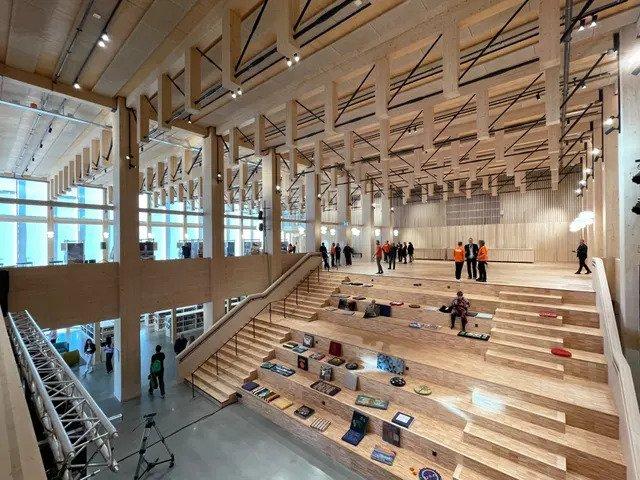A Sweden urban development company, Atrium Ljungberg has planned to build an entire city with wood, which will make it the world’s largest wooden city in Stockholm. The company has planned to start this creative project in 2050 and to install its first buildings in 2027.
It’s an ambitious project and the company aims to redefine urban living through “sustainability, innovation and aesthetic excellence,” said the company in a press release.
The project uses wood as a solution to the environmental challenges faced by Swedish cities. Wood produces much fewer carbon emissions compared to steel and concrete, and wooden construction emits fewer pollutants.

Spanning over an area of 250,000 square meters, the city will have 7,000 office spaces and 2,000 homes in the Sickla neighborhood. The offices and homes will be spread out along with restaurants and shops.
Buildings contribute nearly 40 percent of the world’s CO2 emissions. The New European Bauhaus, an initiative launched by the European Commission in 2020, aims to connect environmentally friendly practices with living spaces and experiences. The press release mentioned that outdated conventions and beliefs have slowed down development in this area.

“We are proud to introduce Stockholm Wood City. This is not only an important step for us as a company, but a historic milestone for Swedish innovation capability,” said Annica Ånäs, CEO of Atrium Ljungberg. “Stockholm Wood City manifests our future. From tenants, there is a strong demand for innovative, sustainable solutions – a demand that we meet with this initiative.”
The project also brings other environmental benefits. Atrium Ljungberg is placing a strong emphasis on creating office spaces because Stockholm’s inner city lacks sufficient office space. The project will focus on producing, storing, and sharing energy within the city.

“Our industry leaves a big mark, and it is important for us to make a positive difference in both the shorter and longer term. We want to create an environment where our customers, those who will live and work here, can participate in the development and design of the city district of the future,” continued Ånäs.
Similarly, Singapore’s Nanyang Technological University (NTU) has constructed the largest wooden building in Asia, covering an area of 43,500 square meters. This project was also driven by similar environmental considerations.


